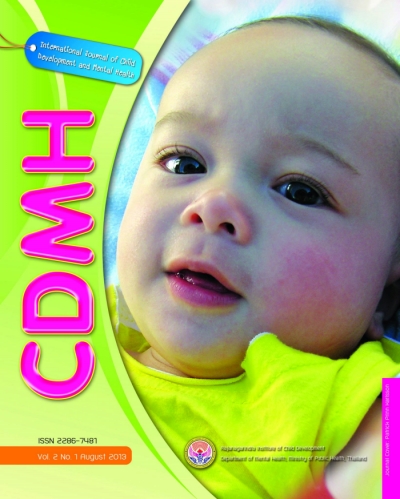Comparison of IQ derived from Objective and Projective Human Figure Drawing
Main Article Content
Abstract
Intelligent testing for some groups of children is difficult because of their lacking of attention or trustworthy to the psychologist. Therefore, drawing for intelligence testing has been easily used since it is simple, unthreatening and interesting. Drawing test can be divided into intelligence and personality test. Although both tests are different based on theory and practice, they show the same pictures of human. Only one time for drawing human picture with projective technique can produce both personality signs and intelligence quotient obtained from projective drawing compared to objective drawing in group aged 13-13 years and 11 months (p=0.001) 15-15 years and 11 months (p=0.01) and greater than. or equal to 16 years (p=0.04) were found. In conclusion, projective human figure drawing may have the possibility to be used for screening IQ in children. In practice, however, due to the significant different IQ found in older children group we recommended practitioners to assess - IQ from projective human drawing figure interpreted by Nagleiri’s criteria should recognize the overestimation of interpreted IQ in this children group.
Article Details
![]()
Creative Commons License
This work is licensed under a Creative Commons Attribution-NonCommercial-No Derivatives 4.0 International (CC BY-NC-ND 4.0)
The authors retain copyright and permit the journal the copyright of first publication
Articles, once having passed the review process and accepted for publication in the CDMH Journal, are copyrighted under the CDMH Journal, Department of Mental Health, Ministry of Public Health. Please be aware distribution of CDMH Journal content for commercial purposes without permission is expressly prohibited. However, distribution with intent to educate, advocate, or spread awareness within the general public and research communities is permitted and encouraged with the understanding that the CDMH Journal Editorial Board do not hold jurisdiction or liability for any accompanying comments, text, or information from third parties, either in favor for or against the original article’s assertions, conclusions, methodology, or content.


